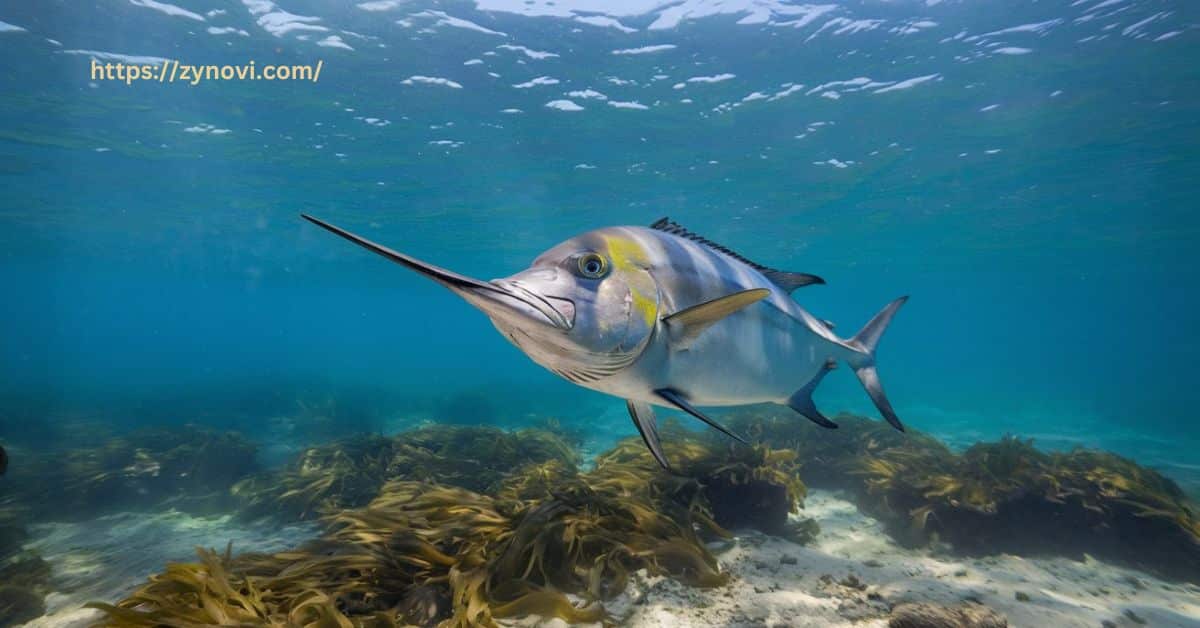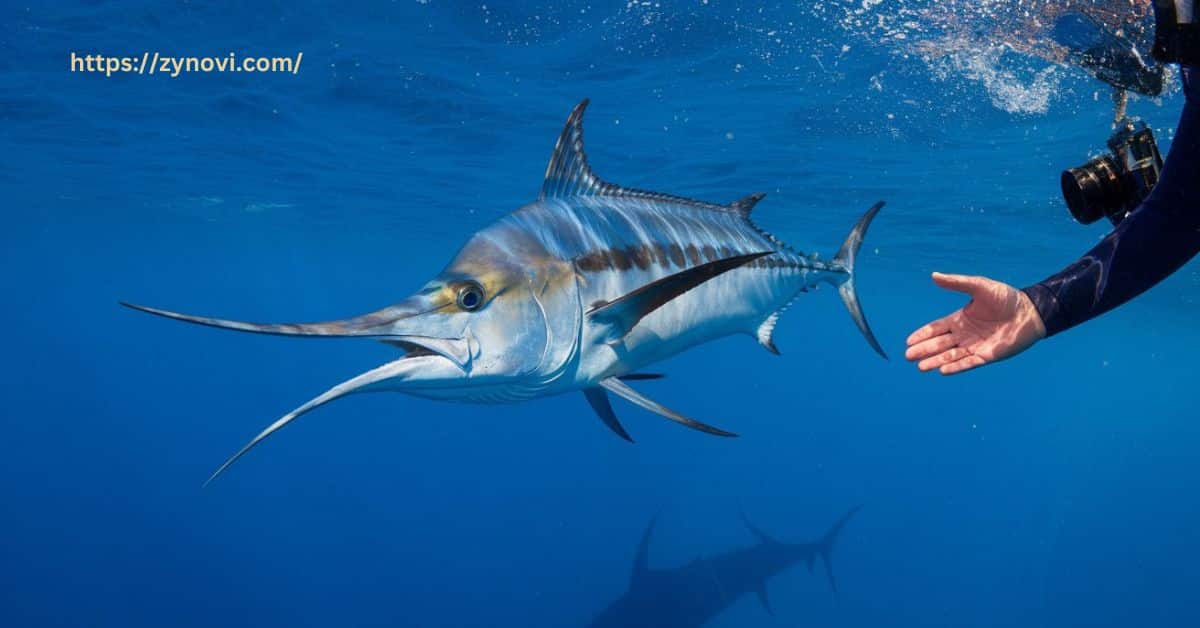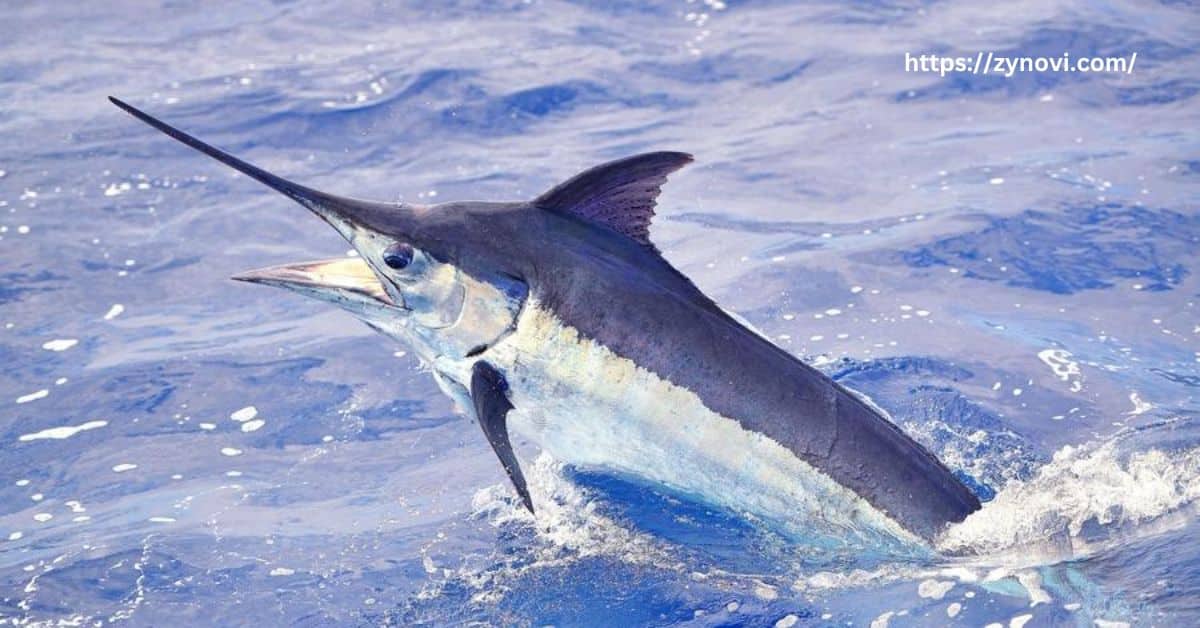Do swordfish attack humans? No, swordfish do not typically attack humans; most encounters are defensive reactions when they feel threatened.
You’ve probably heard wild stories about swordfish ramming boats or attacking divers, but how much of that is actually true? These sleek, powerful predators rule the open ocean, but they’re not out to get you. In fact, most encounters happen because of human actions, not because swordfish are naturally aggressive.
If you’ve ever wondered whether these magnificent creatures are dangerous, you’re in the right place. Let’s find out the facts, debunk the myths, and uncover the real nature of swordfish behavior!
What Are Swordfish?
Swordfish, are among the most fascinating creatures of the ocean. Swordfish are large, predatory fish recognizable by their long, flat, pointed bill, which resembles a sword.
They are among the fastest swimmers in the ocean, capable of reaching speeds of up to 60 mph.
These ocean predators are solitary hunters, primarily found in tropical, temperate, and warm ocean waters around the world.
Physical Characteristics
| Physical Attributes | Details |
|---|---|
| Scientific Name | Xiphias gladius |
| Length | Can grow up to 15 feet (4.6 meters) in length, making them one of the largest predatory fish. |
| Weight | Weighs as much as 1,400 pounds (635 kilograms), showcasing their massive size and strength. |
| Speed | Reaches speeds of up to 60 mph, ranking as one of the fastest fish in the ocean. |
| Distinctive Features | Torpedo-shaped body for streamlined swimming and a sharp, sword-like bill for hunting and defense. |
Habitat and Distribution
Swordfish are predominantly found in deep offshore waters, thriving at depths ranging from 650 to 2,000 feet. These remarkable predators inhabit tropical, temperate, and warm oceans, with a widespread presence in the Atlantic, Pacific, and Indian Oceans.
Regions such as Florida, famous for its rich marine biodiversity, frequently report sightings and interactions with swordfish. Their preference for deep waters highlights their adaptation to hunting and surviving in challenging oceanic environments.
Role in the Ecosystem
As apex predators, swordfish play a crucial role in maintaining the balance of marine life. Their diet consists of mackerel, hake, squid, and other smaller fish, which they hunt using their sword-like bill to slash through schools of prey.
This hunting technique is both efficient and deadly, ensuring they remain one of the top predators in the ocean.
Wild Swordfish: Behavior and Habits

Natural Behavior
Swordfish are carnivorous, solitary, and mostly non-territorial. Unlike some marine species that form schools, swordfish prefer to roam the deep waters alone. Their behavior is shaped by their need for survival and hunting efficiency.
Hunting Techniques Swordfish rely on their agility and speed to hunt. Their sword-like bill is a key tool, used not to stab but to slash through schools of fish, leaving stunned or injured prey in their wake. This allows them to feed effectively in the vast expanses of the ocean.
Defensive Reactions
Swordfish are not naturally aggressive toward humans, but they can become highly defensive when threatened.
If they feel trapped, such as when caught in fishing gear or pursued by predators, they may use their long, sharp bill to lash out in an attempt to escape.
This reaction can cause serious injury to fishermen or other marine creatures. Their incredible speed and agility also help them evade danger, making them formidable when defending themselves.
Do Swordfish Attack Humans?
One of the most common questions asked about these creatures is whether they attack humans. The answer lies in understanding their behavior and the context of human-swordfish encounters.
Defensive Reactions of Swordfish
Swordfish are not naturally aggressive toward humans, but they can become highly defensive when they feel threatened or trapped.
Most reported incidents occur during fishing activities, where a swordfish caught on a line may thrash violently in an attempt to free itself.
- Their long, sharp bill becomes a powerful weapon, capable of causing serious injuries.
- Divers who get too close or invade their space may also trigger a defensive reaction, as swordfish perceive them as potential threats.
Case Studies and Verified Incidents
- In 2015, a fisherman off the coast of Florida was injured by a swordfish after attempting to reel it in. The fish, in a desperate attempt to escape, struck the man with its bill.
- Historical accounts from the 20th century describe swordfish ramming small boats, likely due to stress or confusion.
Such incidents, while dramatic, are exceedingly rare. Swordfish are not predatory toward humans and do not see us as a food source.
What Makes Swordfish Seem Aggressive?

The aggressive reputation of swordfish stems from a mix of folklore, media portrayals, and misunderstanding of their behavior.
Origins of the Myth
- Maritime Folklore: Throughout history, sailors’ tales have often exaggerated the dangers of swordfish, portraying them as fierce sea creatures capable of ramming and even sinking ships. These stories, passed down through generations, added to the mystique and fear surrounding the species.
- Fishing Stories: Fishermen who encountered swordfish defending themselves, especially when caught on a line or harpooned, likely contributed to their aggressive reputation. Their powerful thrashing and swift, sharp bill strikes made them seem more dangerous than they actually are.
Media Representation
Documentaries and films sometimes sensationalize swordfish behavior, portraying them as more aggressive than they are.
This fuels the misconception that swordfish actively attack humans.
Their sword-like bill is often mistaken as a weapon of aggression, but in reality, it is primarily a tool for hunting and self-defense.
Safe Ways to Observe Swordfish in the Wild
Observing swordfish in their natural habitat can be a breathtaking experience. However, it’s important to prioritize safety for both humans and the fish.
Best Practices for Divers and Boaters
- Maintain Distance: Always keep at least 30 feet away from swordfish to prevent triggering a defensive reaction. These powerful fish can strike unexpectedly if they feel threatened or trapped.
- Avoid Sudden Movements: Quick or erratic movements may startle a swordfish, making it perceive you as a threat. Staying calm and moving slowly can help prevent unnecessary aggression.
- Respect Their Space: Never attempt to touch, chase, or corner a swordfish, as this can provoke defensive behavior. Observing them from a safe distance ensures both your safety and theirs.
Tips for Fishermen
- Use Proper Equipment: Always use strong, durable fishing gear designed to handle large fish like swordfish. This helps minimize unnecessary harm and ensures a safer fishing experience.
- Handle with Care: If you accidentally catch a swordfish, avoid excessive handling and release it as quickly as possible. A stressed swordfish can thrash violently, increasing the risk of injury.
- Wear Protective Gear: Use gloves and other protective gear to reduce the risk of cuts or punctures from the swordfish’s sharp bill. Proper precautions can prevent serious injuries during handling.
Ethical Wildlife Observation
- Support Marine Conservation: Advocate for and contribute to marine conservation efforts aimed at protecting swordfish and their natural habitats. Sustainable practices help maintain healthy ocean ecosystems for future generations.
- Avoid Harmful Activities: Refrain from participating in activities that endanger marine life, such as unsustainable fishing or habitat destruction. Responsible actions ensure the survival of swordfish and other marine species.
Assessing the Danger: Are Swordfish a Threat?

Swordfish are often misunderstood when it comes to their potential danger to humans.
Comparing Swordfish to Other Ocean Predators
| Marine Animal | Likelihood of Attack on Humans | Primary Cause of Attack |
|---|---|---|
| Swordfish | Rare | Defensive behavior |
| Sharks | Moderate | Mistaken identity, curiosity |
| Barracudas | Rare | Attraction to shiny objects |
| Jellyfish | Moderate | Accidental stings |
Factors That Increase Risk
- Fishing Activities: The majority of swordfish-related injuries happen during fishing, as the fish thrashes violently when caught on a line or harpooned. Their sharp bill can cause serious harm if handled improperly.
- Environmental Stress: Swordfish may become more defensive when they feel trapped, disoriented, or confined in unfamiliar surroundings. Changes in water conditions or sudden disturbances can trigger aggressive reactions.
The Reality of Swordfish Encounters
Swordfish are not naturally aggressive toward humans and do not actively seek confrontation. Almost all reported attacks occur when the fish feels threatened, such as during fishing activities or when divers get too close.
Their sharp bill is a defensive tool rather than a weapon of attack. By maintaining a respectful distance and understanding their behavior, encounters with these magnificent creatures can remain safe, fascinating, and truly awe-inspiring experiences.
Final Verdict
Swordfish are not naturally dangerous to humans and do not pose a direct threat unless provoked. While their sharp bills make them formidable defenders, they are not aggressive predators seeking conflict.
Most incidents happen due to human activities, such as fishing or accidental provocation. By respecting their space and behavior, humans and swordfish can coexist peacefully in the ocean.
FAQs
Are swordfish aggressive?
Swordfish are not inherently aggressive and usually only become defensive when threatened or provoked.
Could a swordfish impale a human?
While rare, a swordfish could potentially impale a human if it feels cornered or threatened, especially during fishing activities.
Can a swordfish stab someone?
Yes, a swordfish can stab someone with its sharp bill if it feels provoked or trapped, but attacks on humans are extremely uncommon.
Do swordfish attack sharks?
Swordfish may defend themselves against sharks, but they do not actively hunt or attack them. Their primary focus is on smaller prey.
Conclusion: Do Swordfish Attack Humans?
The idea that swordfish are aggressive attackers is largely a myth. These powerful creatures are more focused on hunting their natural prey, like mackerel and squid, than interacting with humans. However, caution is essential when encountering them.
Whether diving or fishing, respecting their space ensures a safe experience. Swordfish aren’t villains of the sea they are vital to the marine ecosystem. Next time you see one, admire its beauty and strength, but always keep a safe distance!










